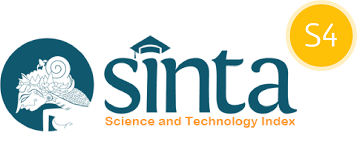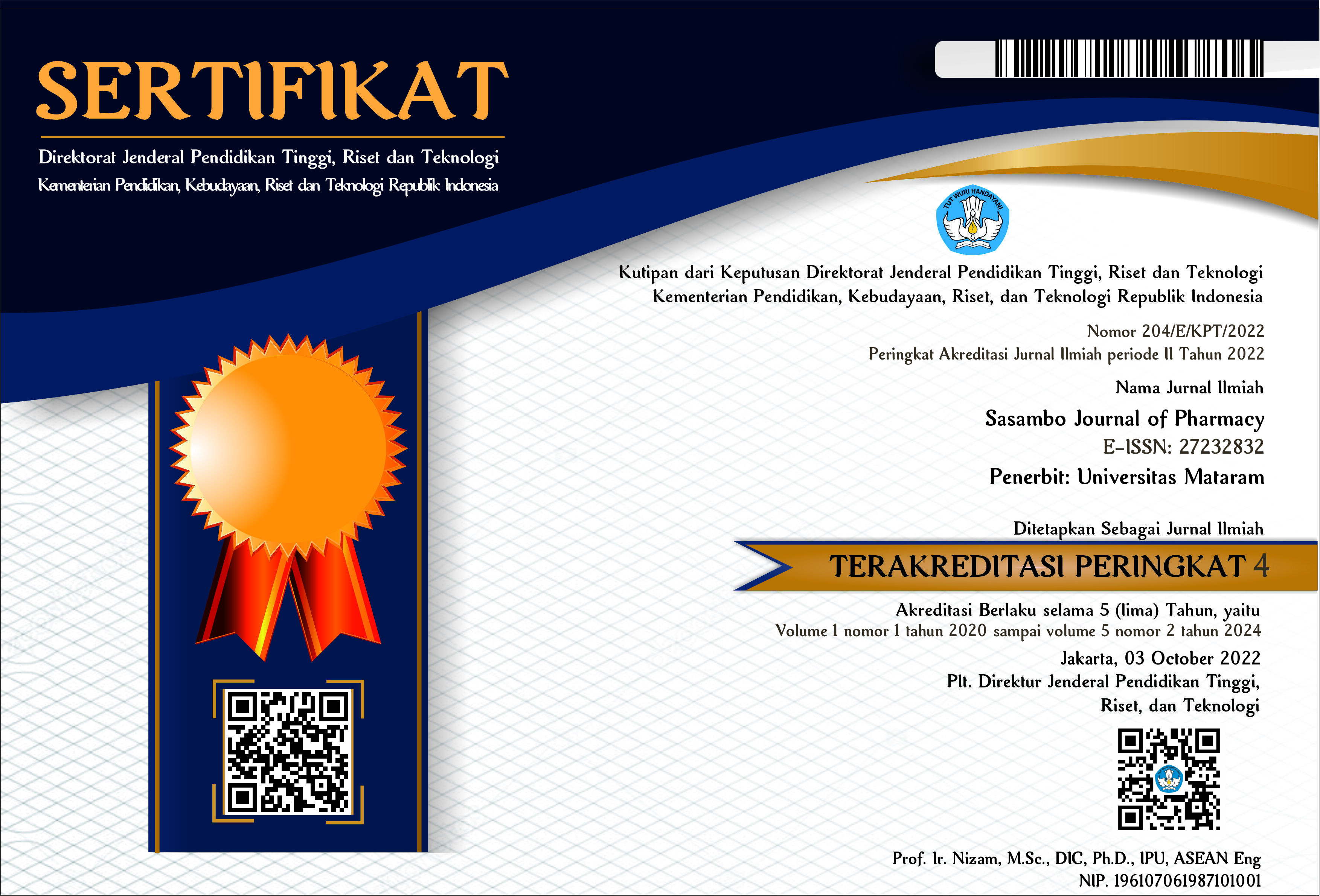The influence concentration gel agent propolis combination of mulberry leaf on the growth of the bacteria Propionibacterium acnes
DOI:
10.29303/sjp.v3i1.126Downloads
Abstract
This research was carried out with the aim of determining the inhibitory power of the combination gel of propolis extract and mulberry leaf extract against Propionibacterium acnes bacteria and determining the concentration of propolis extract that provided the greatest inhibitory power against the test bacteria. The research method includes the extraction of mulberry leaves by maceration using 70% ethanol as a solvent and the propolis extract used is a ready-to-use extract. The formulations were designed with various concentrations of propolis (0.5%, 1%, 1.5%) and 0.5% mulberry leaf concentration. Testing the antimicrobial activity of propolis extract in combination with mulberry extract in gel preparations against the growth of Propionibacterium acnes bacteria was carried out using the agar diffusion method. The results showed that the average diameter of the inhibition area at 0.5% concentration was 36.87 mm, at 1% concentration was 44.557 mm and at 1.5% concentration was 45.97 mm, positive control was 49.21 mm. Based on the data obtained, it is concluded that the gel formula with a propolis concentration of 1.5% is the preparation with the largest zone of inhibition.
Keywords:
Inhibition test, gel, propolis extract, mulberry leaf extractReferences
Badan POM RI. 2008. Taksonomi Koleksi Tanaman Obat Kebun Tanaman Obat Citeureup. Penerbit Global. Jakarta. 59.
Dirjen POM RI. 2010. Acuan Sediaan Herbal. Volume Kelima. Direktorat Obat Asli Indonesia. Jakarta. 100.
Difco, 1980. Cultur Media Handbook, E Meck. Darmstad federal republik Of Germany. 124.
Djide, M.N. 2003. Mikrobiologi Farmasi. Laboratorium Mikrobiologi Farmasi Fakultas MIPA UNHAS. Makassar. 84-89.
Direktorat Jenderal POM. 2000. Parameter Standar Umum Ekstrak Tumbuhan Obat. Departemen Kesehatan Republik Indonesia. Jakarta. 1, 5, 10-11.
Florentinus W,G dan Amadeus A,D,. 2014. Jerawat Yang Masih Perlu Anda Ketahui. Penerbit Graha Ilmu.Yogyakarta. 1, 8, 19, 39-47.
Fauziah Noer Sitti. 2013. Pengaruh Konsentrasi Ekstrak Propolis Dalam Sediaan Krim Jerawat Terhadap Penghambatan Pertumbuhan Bakteri Propionibacterium acnes. FMIPA Universitas Islam Makassar. Makassar. 12-15.
Garrity, G, M., Bell, J, A., and Lilburn, T, G., (2004), Taxonomic Outlineof The Prokaryotes Bergey’s Manual of Systematic Bacteriologi, 2th Edition, Springer, New York Berlin Hendelberg, United States of America.s. 5.
Jawetz E.1996. Mikrobiologi Kedokteran. Edisi 20 Penerbit Buku Kedokeran EGC. Jakarta. 208.
Kartasapoetra. 2006. Budidaya Tanaman Berkhasiat Obat. Penerbit Rineka Cipta. 26.
Hamzaa. A.N. El Shahat dan H.M.S. Mekawey. 2012. The Antioxidant Role of Mulberry (Morus alba L.) Fruits in Ameliorating the Oxidative Stress Induced in Ë -Irradiate Male Rats. http://www.esnsa-eg.com/download/researchFiles/(25)%2098.pdf.
Sang Hee Lee, dkk. 2002. Mulberroside F Isolated from alba Inhibits MelaninBiosynthesis.http://bpb.pharm.or.jp/bpb/200208/b08_1045.pdf.
Sarwono. 2001. Lebah Madu. Argo Media Pustaka. Jakarta. 57, 64-65, 69.
Syaifuddin. 2006. Anatomi Fisiologi Untuk Mahasiswa Keperawatan. Edisi 3. Penerbit Buku Kecokteran EGC. Jakarta. 34-35.
Susilo Bambang, Ni Made Mertaniasih, Eko Budi Koendhori, Mangestuti Angil. 2009. Komposisi kimiawi dan aktivitas Antimikroba Propolis dari Malang Jawa Timur. http://journal.unair.ac.id/filerPDF/0420vol20820April20200920FF20 Bambang20s2023-30.pdf.
License
Copyright (c) 2022 The Author(s)

This work is licensed under a Creative Commons Attribution 4.0 International License.
Authors who publish with Sasambo Journal of Pharmacy (SJP), agree to the following terms:
- Authors retain copyright and grant the journal right of first publication with the work simultaneously licensed under a Lisensi Creative Commons Atribusi 4.0 Internasional. This license allows authors to use all articles, data sets, graphics and appendices in data mining applications, search engines, web sites, blogs, and other platforms by providing an appropriate reference. The journal allows the author(s) to hold the copyright without restrictions and will retain publishing rights without restrictions.
- Authors are able to enter into separate, additional contractual arrangements for the non-exclusive distribution of the journal's published version of the work (e.g., post it to an institutional repository or publish it in a book), with an acknowledgment of its initial publication in Sasambo Journal of Pharmacy
- Authors are permitted and encouraged to post their work online (e.g., in institutional repositories or on their website) prior to and during the submission process, as it can lead to productive exchanges, as well as earlier and greater citation of published work (See The Effect of Open Access).







